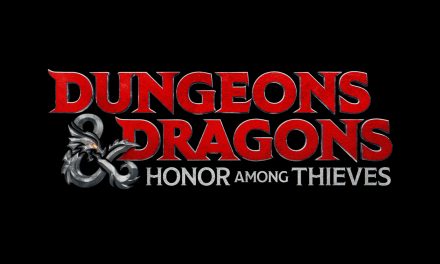In the current moviegoing landscape of dull and formless CGI-laden Hollywood blockbusters dominating our screens, the smaller genre gems we find that attempt to push forward the medium feel like miracles. That’s why it’s important to champion them and let people know of their existence, especially if it’s well worth your time. A film like Yugo Sakamoto’s Baby Assassins has a relatively small budget and minimal aesthetics, yet the director makes the most out of his resources with airtight stuntwork, intricately choreographed fight scenes, and effective comedic chemistry through its two leads, Chisato Sugimoto (Akari Takaishi) and Mahiro Fukagawa (Saori Izawa), as they target the daughter of a Yakuza boss who attempts to kill them for murdering his father.
While the movie was lethargic-paced, its bursts of action were incredibly inspiring. There wasn’t a single moment within its fight scenes that my eyes weren’t doing mental backflips, attempting to figure out exactly how in the hell they’d choreograph those moves! They physically feel unreal, but the fights are so perfectly constructed that we immediately buy into Chisato and Mahiro’s tactile, kill-first fighting style. It also effectively blended the slapstick, almost improvisational fighting style pioneered by Jackie Chan in the Police Story franchise with a grittier and more cathartic feel.
Baby Assassins 2 Plot Summary
With its sequel, Baby Assassins 2 Babies (simply titled in North America, Baby Assassins 2), Sakamoto has to amp up the action and stakes and deliver more of them throughout the film. Baby Assassins had revolutionary action, but there were only two major fight setpieces: one at the top of the film (that brilliantly established its improvisational style) and the climax. The rest is a straightforward, mildly enjoyable comedy, thanks to Taikaishi and Izawa’s chemistry.
In Baby Assassins 2, not only does Sakamoto deliver more (and better) action, but the film’s comedic sections are also far more enjoyable as they give better emotional stakes to Chisato and Mahiro, who have recently been suspended by the assassin guild for stopping a bank robbery. The two didn’t kill any of the robbers (in the film’s most Jackie Chan-inspired scene) but used their skills in the public eye, which is a big no-no for the guild. Because of this, the duo have been suspended indefinitely, pending an investigation. They will now have to find normal jobs to pass the time as the investigation begins.
However, a duo of amateur assassins (Tatsuomi Hamada & Joey Iwanaga) wants to take their suspended jobs, and the only way they can do so is if Chisato and Mahirao are dead. The duo is hellbent on taking them out, but the assassins are far more agile and unpredictable than they are. This allows Sakamoto to craft a perfect blend of high-stakes action with light comedy, especially through its minimalist cinematography that feels incredibly creative based on their limitations.

Imagination Runs High in Baby Assassins 2
So how does this relatively low-budget actioner feel more creative and alive than the current ‘large-scale’ blockbusters we’re accustomed to seeing? Easy – Sakamoto understands the notion of ‘depth of field,’ which doesn’t seem to exist in Hollywood pictures anymore, and constantly plays with the foreground and background of the frame. Two such instances have garnered the biggest laughs from this film. One of them involves Makoto and Yuri (the two amateurs) attempting to kill Chisato and Mahiro in broad daylight by following them as they walk back home. As they stop and talk, the two try to ‘hide,’ with one of them jumping on the fence as if he’s observing what’s on the other side. It’s playfully silly and simple, but it still works so well because Sakamoto’s imagination is always vivid in every frame he crafts.
Movement is also important in creating its larger-than-life action scenes, not just from the actors but through its camera pans and extensive tracking shots. What could’ve been an innocuous dispute between Chisato and Mahiro as they’re working as mascots turns into a high-stakes fight, elevated by Sakamoto’s dynamic visual (and physical) style. The camera observes them picking at each other until it starts approaching them, going at it as they get angrier. It then cuts from their perspective inside the mascot (think of Robert Downey Jr’s Iron Man in the MCU, no joke) and frequently uses split-screen to exacerbate the tension the two protagonists feel (the best use of this stylistic flourish happens during the final fistfight, a Smash Bros. tribute) They feel like small visual flourishes but enhance so much of the experience and make each action scene feel as larger in scale and scope as possible.

When the film ends in a bravura gun-fu climax between the assassins and the amateurs, which then leads to another unreal fistfight that feels impossible to stage and shoot (the sound design, in particular, aurally represents each fist ‘whoosh’ with incredible precision), it solidifies Sakamoto as an incredible image-maker, and action director Kensuke Sonomura an important figure in modern J-action cinema. Elevating each scene with large, wide camera moves as Chisato and Mahiro skillfully dodge bullets (the kick on the bumper to propel Mahiro in another direction is the most inventive fight move I’ve seen since Caine’s stair walk in John Wick: Chapter 4) makes them feel special.
The biggest point of comparison for such a scene would be the John Wick movies. While they’ve pioneered action and revolutionized John Woo’s ‘gun-fu’ choreographies, Baby Assassins 2 crafts its unique action style without ever being beholden from other pieces of work. Sure, it reappropriates Jackie Chan’s style, but never in a way that feels cheap or obvious. It brings something new to the table while tipping the hat to the films, directors, and stars that inspired their films.
This unique blend of comedy and action is incredibly hard to visualize and execute. While Sakamoto doesn’t have the same resources as Chad Stahelski and Dan Laustsen for John Wick, he certainly has enough imagination and creativity to make each action scene feel unique and spectacular, which makes Baby Assassins 2 such a miracle to witness.
The sequel is not only better than the original in every conceivable way, but it also shows all of us how we can – and should – shoot and choreograph action, regardless of how high (or low) the budget may be. It would seem disingenuous to compare Baby Assassins 2 to a large-scale production with far more capabilities, but the current moviegoing landscape is so grim that people will be quick to compare apples to oranges.
However, there’s one thing that Baby Assassins 2 will act to creatives who have fallen out of love with the art of filmmaking or have at least been disillusioned by the current moviegoing techniques: use your imagination. When the director’s imagination and creativity are at the forefront of every single frame, it doesn’t matter how high or low the budget is. Anything that feels impossible immediately does, and the movie then finds its audience in the process.
It can take a while before Baby Assassins 2 gets as big of a reception in North America as it did in Japan, but it will. Each important film eventually finds people. All it takes is just one person to spread the word.
Baby Assassins 2 arrives on digital and Blu-ray April 2.
For more Movie Reviews, make sure to check back to That Hashtag Show.

![‘Baby Assassins 2’: John Wick Walked So Chisato and Mahiro Could Run [Review]](https://thathashtagshow.com/wp-content/uploads/2024/04/e00a29b3-6984-4544-a91b-48fcf1cc30ae-1280x640.jpg)
![A Teacher – Uncomfortable, But That’s The Point [FX/Hulu Series Review]](https://thathashtagshow.com/wp-content/themes/Extra/images/post-format-thumb-text.svg)


![Prey for the Devil [REVIEW]](https://thathashtagshow.com/wp-content/uploads/2022/10/project_20221027_1324195-01-440x264.png)